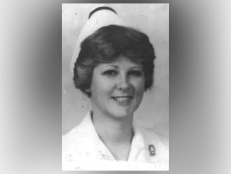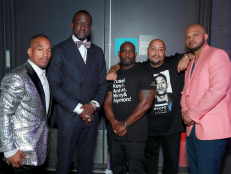How A Florida Serial Rapist Became The First Person In The United States To Be Convicted By DNA Evidence
A news report and magazine advertisement in 1986 were key in bringing Tommie Lee Andrews to justice.

Florida Department of Corrections
National DNA Day is celebrated annually on April 25, a date that commemorates both the completion of the Human Genome Project in 2003 as well as the 1953 discovery of the DNA (Deoxyribonucleic acid) double helix structure, according to the National Human Genome Research Institute.
Over the decades, the evolving science behind DNA has dramatically impacted the criminal justice system and continues to help law enforcement capture criminals — starting with the very first case in the United States that relied on DNA to convict a serial rapist over 35 years ago.
On Feb. 21, 1987, a man terrorizing women in Orange County, Florida, brutally attacked Karen Munroe in her Orlando home while her two young daughters slept in a nearby bedroom, WESH reported.
“I'm trying to like talk to him, to keep him occupied, so he wouldn’t go into the other room and hurt my girls in between fights, in between being choked, in between being smothered,” Munroe told the station about her attacker, who she never saw but knew was armed with a sharp object. “This meant to me that he was here to kill me.”
Munroe survived the ordeal, and days later police arrested a suspect in the case, Tommie Lee Andrews, after he was reportedly spotted peeping into the window of another residence in Munroe’s neighborhood.
Andrews was accused of committing dozens of attacks in the area.
Jeff Ashton, a prosecutor assigned to around six of the cases involving the suspect, needed solid evidence to convict. He recalled a news report he watched the previous year, 1986, about a man in England who police identified as the killer of two young girls with the help of a geneticist.
Then, a magazine advertisement with the headline “He’s Wearing his Daddy’s Genes” for Lifecodes, a laboratory specializing in paternity tests, gave Ashton an idea. Wondering if the paternity test method could be utilized on forensic evidence in cases to help identify criminals, the prosecutor called up the company and asked. “They said, ‘Yeah, actually, there are multiple people working on this and we're just about to go online for forensic cases,’” Ashton said.
Using the brand-new DNA method, Munroe’s blood was matched to forensic evidence, which included semen, collected from Munroe’s home after her sexual assault.
“Using DNA to help identify the source of a biological sample in a forensic case, was unprecedented,” said Michael Baird, a doctor who worked with Lifecodes at the time. “So I was certainly aware that this was groundbreaking.”
At trial, a jury found Andrews guilty of Munroe’s rape, and he was the first person in U.S. history to be convicted of a crime through the use of DNA evidence.
In February 1988, DNA also helped prosecutors win a conviction against Andrews a second time in connection with the May 1986 sexual assault of Nancy Hodge in her Orlando home.
Andrews was released from custody in August 2021.



![Angela Brosso [left] and Melanie Bernas [right] were both murdered in the 1990s while separately riding their bikes along the Arizona Canal in Phoenix, Arizona.](http://investigationdiscovery.sndimg.com/content/dam/images/investigationdiscovery/crimefeed/legacy/2023/07/phoenix-police-department-angela-brosso-melanie-bernas-71823.png.rend.hgtvcom.231.174.suffix/1689696375259.png)





